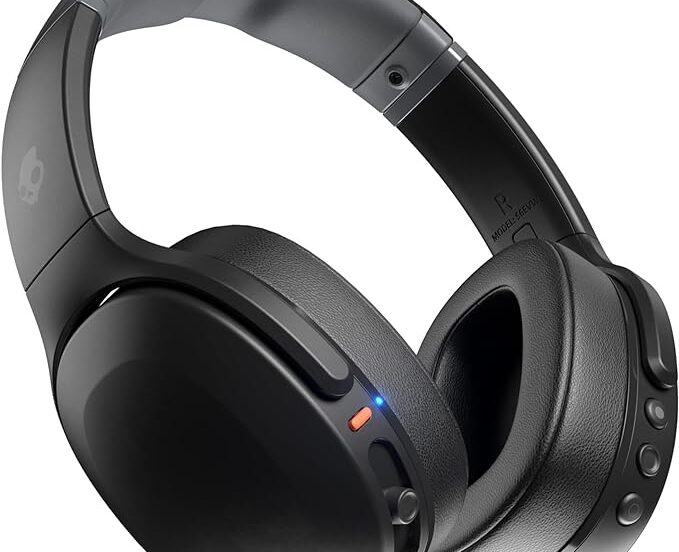How Noise Cancelling Headphones Transform Lives for Individuals with Autism
Imagine a world where everyday sounds—be it the hum of a refrigerator, the buzz of a fluorescent light, or the distant chatter of a crowd—feel overwhelmingly invasive. For many individuals with autism, this is a daily reality where typical environmental noise can be distractingly loud or even painful. This is where noise cancelling headphones come into play, serving as a crucial tool for sensory management. But why are these devices so transformative? Let’s explore their impact and understand their essential role in providing comfort and enhancing focus for those with autism.
Understanding Autism and Sensory Sensitivity
Autism Spectrum Disorder (ASD) is marked by a wide range of symptoms, one of the most common being sensory sensitivity. Individuals with autism might experience hyper-reactivity to sensory input that most people can easily ignore. This heightened sensitivity can lead to sensory overload, intense stress, and even physical pain, making everyday environments challenging to navigate.
The Science Behind Noise Cancelling Headphones
Noise cancelling headphones use active noise control technology to reduce unwanted ambient sounds. By creating sound waves that are phase-inverted by 180 degrees to the incoming noise, these headphones can effectively cancel out the noise, allowing the wearer to experience a much quieter environment. This technology provides a reprieve from the relentless sensory input, enabling individuals with autism to focus better and feel less anxious in noisy settings.

Choosing the Right Headphones
When selecting noise cancelling headphones for someone with autism, consider factors such as:
- Comfort: Lightweight and with soft padding to avoid adding sensory discomfort.
- Durability: Sturdy enough to handle frequent use.
- Battery Life: Long-lasting to ensure they don’t fail during crucial moments.
- Sound Quality: Effective enough to dampen both high and low-frequency sounds.
The Benefits Beyond Silence
Beyond just blocking out noise, these headphones can help individuals with autism by:
- Enhancing Concentration: Reducing auditory distractions increases focus on tasks.
- Reducing Anxiety: Less sensory input can decrease anxiety levels, making social situations more manageable.
- Improving Communication: By controlling auditory input, individuals can better process and engage in verbal communication.
The Psychological Impact: A Deeper Dive
Reducing noise pollution isn’t just about comfort; it’s about mental health. Continuous exposure to uncontrollable noise can lead to significant stress, anxiety, and decreased cognitive function. For individuals with autism, who may already be dealing with heightened stress levels, noise cancelling headphones can be a tool for psychological relief, offering them control over their sensory environment and reducing the cognitive load that comes with noise.
Community Feedback: Voices from the Field
Therapists and educators within the autism community have noted the positive effects of noise cancelling headphones. They report observations of decreased agitation and increased participation in classroom activities among students who use these devices regularly.

Practical Tips for Everyday Use
To maximize the benefits of noise cancelling headphones, consider these tips:
- Gradual Introduction: Slowly introduce the headphones to ensure they don’t become a source of additional stress.
- Strategic Use: Use headphones during particularly noisy times of the day or in specific settings that have previously caused distress.
- Monitoring Use: Ensure that the headphones are used to assist coping, not to completely withdraw from the environment.
Latest Innovations in Noise Cancelling Technology
Recent advancements include headphones with adjustable noise cancellation levels, improved battery life, and even models designed specifically for children, with durability and safety in mind.
Facing the Challenges: Common Concerns Addressed
Despite the benefits, there are challenges. Dependence on headphones might be criticized for encouraging withdrawal rather than engagement. However, when used strategically, they can be a powerful tool for helping individuals with autism integrate into noisy environments gradually and comfortably.

Encouraging Social Acceptance and Awareness
Promoting understanding and acceptance of sensory tools like noise cancelling headphones can lead to more inclusive public spaces. Awareness campaigns and education about autism can encourage empathy and support for the use of such aids.
Conclusion: The Sound of Silence
Noise cancelling headphones are more than just a barrier to sound; they are a gateway to engagement for many with autism. By embracing these devices, we can take a significant step towards creating a society that accommodates all kinds of sensory needs, fostering an environment where everyone has the opportunity to participate and thrive.




